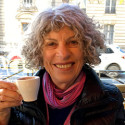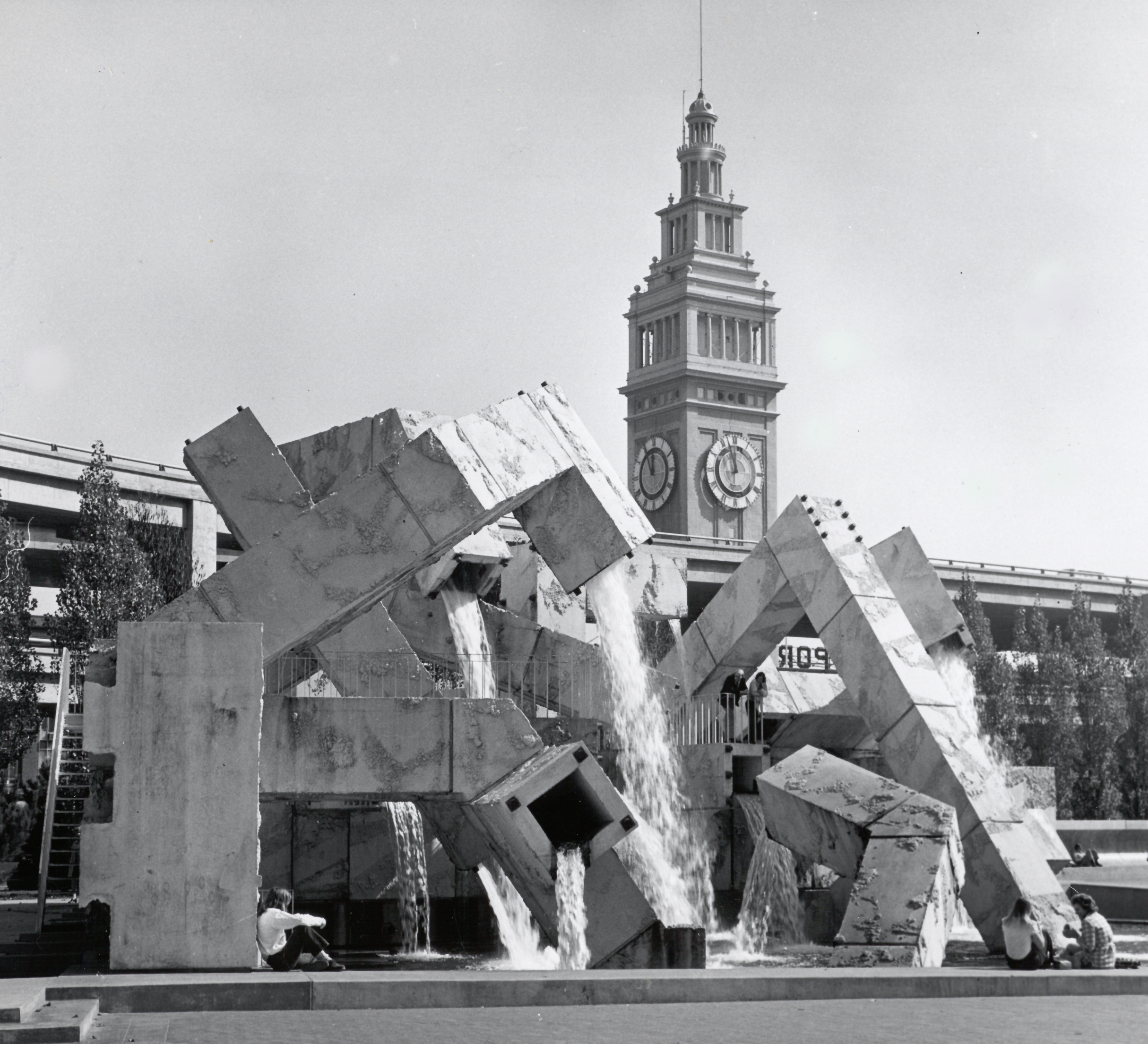
Experiential Theater Revives Age of Speakeasy, Bebop
By Jean Schiffman
If any performing art form is particularly equipped to dramatize our American culture in its various permutations — and to immerse audiences in specific time periods in ways more encompassing, more visceral than traditional proscenium plays — it is immersive theatre, popularized by such progenitors as “Tony n’ Tina’s Wedding” and the New York hit “Sleep No More.”

Chorus girls backstage at Boxcar Theater's Speakeasy. Main image, Katie Lavellle. Photos by Peter Liu
Opening in April, two immersive theatre experiences — one taking place in a secret, hidden venue in North Beach, the other in a bespoke club in the Fillmore district — re-create two distinctly different environments. The first, "The Speakeasy: Age of Scofflaws" (April 4-June 23), an extravaganza set in 1927, is a boozy, three-hour-long, flapper-age sensurround-style adventure; the other, "The Fillmore Eclipse" (April 19-May 12), which welcomes audiences into a bebop-infused jazz club in 1955, suggests postwar peace in the shadow of the looming redevelopment project that would eventually undermine San Francisco’s Black population.
As is customary in immersive theatre, both shows comprise close-up interaction with the performers, full bars, live music and the freedom to roam around, explore the venue and follow the multiple storylines. No audience member can see all the action.
In fact, says creator Nick A. Olivero, the founding executive director of Boxcar Theatre, which produces “The Speakeasy,” “You’d have to see it six or seven times to see all the material.”
“The Speakeasy” first opened in the Tenderloin in 2014, later moved and then took an enforced break during the pandemic. The precise location, on the border between North Beach and Chinatown, is a secret (the address is divulged when you buy your ticket) because, well, it’s 1927, the prohibition era, and it’s a speakeasy, so….
The multimillion-dollar, custom-designed, two-story cabaret comprises three bars and a casino, circuitous passageways, a ballroom, faux entrances and assorted nooks and crannies. Olivero, who has a background in clowning, wrote the 1500-page script — which includes comedy, clowning and drama — with Bennett Fisher plus various contributing writers, including “Tony n’ Tina” creator Mark Nassar, but allowed plenty of space for improv and for audience down-time amidst the frenzy.
And indeed it takes a theatrical village to wrangle a production with this many moving parts: 17 performers plus a duo tap dance act. Emotional encounters, vaudeville-style timing, a gambling card montage in the casino that turns into a dance sequence. Multiple storylines happening simultaneously. Multiple directors serving different functions: Ciera Eis and Felicity Hesed as principal directors, consulting director Jeff Raz as clowning guru and more. Comic star Ron Campbell as emcee. The overall story itself, says Olivero, is about control: “by government, by business. Are we controlling our own history?
“This is a roaring 20s fantasy,” he adds. But he notes just a few of the many challenges invisible to patrons: safety concerns for the cast (say, dancing the Charleston on a tabletop slippery with drinks); the razor-sharp timing that’s essential.

Michael French, consulting director on "The Speakeasy" as well as director of "The Fillmore Eclipse"
One of the consulting directors on "The Speakeasy," Michael French, who is also the sole director of “The Fillmore Eclipse,” attests to the particular requirements of immersive theatre with its intermingling audience. In both shows, he says, the performers must have the skill to go off-script, take detours and somehow find their place back. But, “If you have a [master of improv like] Ron Campbell in your cast, anything’s possible.” In both shows, the audience will be drinking and kibbutzing at times just two feet away from the actors. “You can overhear [the audience] even if they’re whispering!” French observes. As for the all-important timing: “A 50-second delay can become a three-hour delay.” In directing one scene, he must keep in mind the scene that follows, or perhaps a simultaneous scene happening elsewhere. “There’s no way around the stopwatch,” he says.
French has worked in theatre for 25 years and brings a particular perspective as a Black British man to these two very specifically American time periods: Prohibition era “Speakeasy” and mid-1950s San Francisco’s “Fillmore Eclipse.” “The background to “Speakeasy” is Charles Lindbergh’s solo flight,” he observes. “New frontiers, the future!” Whereas the background of “Eclipse,” while likewise harboring a sense of the future — after all, it’s the space age — is also reactionary time in terms of gender roles and other social issues. The Civil Rights era was underway nationally at the same time as, in San Francisco’s Fillmore district, upheaval loomed.
“Eclipse” is the brainchild of Michael Epstein, who created the small company Walking Cinema in 2010 to produce theatrical walking tours, podcasts and more. This is his first venture into immersive theatre, for which he hired playwright Cleavon Smith, who has a long background in writing about the African-American experience.

Jimbo's Bop City was located on Post Street, San Francisco, and hosted the likes of Sarah Vaughan, Miles Davis, Charlie Parker (photo of Sarah Vaughan c. 1946, by William P. Gottlieb)
Epstein’s inspiration was a club called Jimbo’s Bop City that operated mid-century in the Western Addition and staged big names like Sarah Vaughan, Louis Armstrong, and Charlie Parker, among others. It opened at 2 am: “This bizarre liminal space in a liminal time,” says Epstein. Jimbo’s is gone, but the “Fillmore Eclipse” is its fictional counterpart. In actuality the “Eclipse" is the Honey Art studio in the Fillmore district that Epstein found to be ideal for immersive theatre; Honey Art founder Ericka Scott agreed to host a run of the show. The venue seats 50 viewers at tables and on barstools; they can also wander around, attend a dance lesson or a music lesson, check out the backyard or storeroom. The show includes a live band with a bebop vibe, five performers and an arc that follows the history of the neighborhood as well as the characters’ personal issues and interactions.
“Bebop was just coming into its own,” explains Epstein, of the era. And redevelopment of the Fillmore district was on the near horizon. The African-American inhabitants of the district, most of whom had migrated to San Francisco in the 1940s to work in the shipyards and naval bases here and in the postwar cleanup that followed, were soon to lose their jobs as the ’40s segued into the ’50s. Also, the Fillmore district was targeted for urban redevelopment; the mandated razing of old buildings began in the late 1950s and many of those same African-American residents lost their homes and businesses. Once there were 70 Black-owned clubs in the City, all gone now, says Epstein, who thoroughly researched the era. “We want to tell the story of the Black experience [here] from multiple viewpoints within the community,” he explains, “the challenges, the opportunities for some.”
As for the name “Fillmore Eclipse”: Cleavon Smith came up with it. “It’s the end of something and maybe the start of something else,” says Epstein. Immersive theatre is all about participation. To that end, Epstein asks that anybody who wants to share memories of the Fillmore district at mid-century, to contact them.
→ "The Speakeasy: Age of Scofflaws" April 4-June 23
→"The Fillmore Eclipse" April 19-May 12



